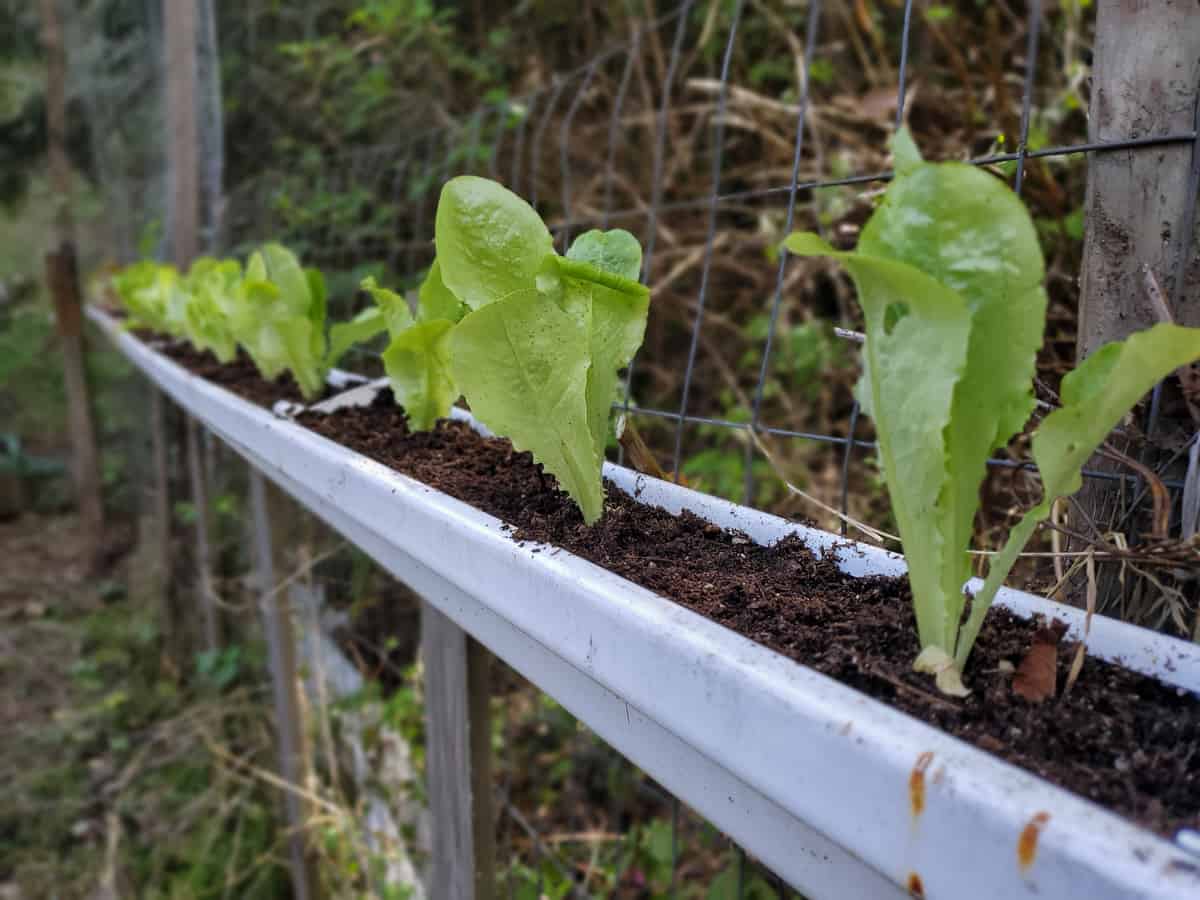

Articles
What Can You Grow In Gutters
Modified: August 21, 2024
Discover the endless possibilities of growing various plants and herbs in gutters with our informative articles. Start your green thumb journey today!
(Many of the links in this article redirect to a specific reviewed product. Your purchase of these products through affiliate links helps to generate commission for Storables.com, at no extra cost. Learn more)
Introduction
Gutter gardening is a unique and innovative way to grow plants, especially in urban environments where space is limited. By utilizing the vertical space provided by gutters, you can create a beautiful and functional garden that adds a touch of greenery to your surroundings. Whether you have a small balcony or a narrow strip of wall, gutters can be transformed into a thriving garden that not only nurtures plants but also enhances the aesthetic appeal of your space.
In addition to being visually appealing, gutter gardening offers several benefits. Firstly, it maximizes the use of available space by utilizing the vertical dimension, allowing you to grow more plants in a smaller area. This is especially beneficial for urban dwellers who may have limited outdoor space to work with.
Furthermore, gutter gardens offer better drainage than traditional planters, as excess water can easily flow out through the openings in the gutters. This prevents issues such as waterlogging, which can be detrimental to plant health.
Another advantage is the customization options that gutter gardening allows. Gutters come in various sizes and materials, giving you the flexibility to choose the one that suits your needs and complements your aesthetic preferences. You can also experiment with different gutter arrangements and configurations to create unique designs and patterns.
Moreover, gutter gardens offer a convenient gardening option, as they can be easily accessed without the need for bending or kneeling. This makes them ideal for individuals with limited mobility or those who prefer a more ergonomic approach to gardening.
If you’re considering starting your own gutter garden, it’s essential to choose the right type of gutter for planting. A seamless aluminum gutter is often the preferred choice, as it is lightweight, durable, and resistant to rust and corrosion. It’s also important to ensure that the gutter is properly secured and installed to withstand the weight of the plants and the soil.
In the following sections, we will explore the steps involved in preparing the gutter for planting, the recommended plants for gutter gardening, and maintenance tips to keep your gutter garden thriving. We will also discuss common challenges faced by gutter gardeners and how to overcome them. So let’s dive in and discover the wonderful world of gutter gardening!
Key Takeaways:
- Transform gutters into thriving gardens, maximizing space, improving drainage, and offering customization options. Enjoy the benefits of growing a variety of plants in limited urban environments with ease and accessibility.
- Embrace creativity with vertical gutter gardens, creating colorful arrangements, living privacy screens, and seasonal displays. Overcome challenges, provide proper care, and enjoy the beauty of nature in unconventional spaces.
Read more: What Can You Grow On A Balcony
Benefits of Growing Plants in Gutters
Gutter gardening offers several advantages that make it a popular choice among gardeners, especially those with limited space. Here are some of the key benefits of growing plants in gutters:
- Maximizes Space: One of the biggest advantages of gutter gardening is its ability to maximize the use of vertical space. By utilizing the walls, fences, or balcony railings, you can create a garden in areas that might otherwise go unused. This is particularly beneficial for urban dwellers or those with small yards or balconies.
- Better Drainage: Gutters are designed to efficiently channel water away from roofs, which makes them ideal for gardening. The trough-like structure of gutters allows excess water to flow out easily, preventing issues such as waterlogging and root rot. This helps ensure good drainage for the plants, promoting their overall health and vitality.
- Accessibility: Unlike traditional ground-level gardens, gutter gardens are at waist height or above. This makes them more accessible and easier to tend to, eliminating the need for excessive bending or kneeling. This is particularly beneficial for those with physical limitations or back problems, as it reduces strain on the body while gardening.
- Customization Options: Gutters come in various sizes, materials, and colors, offering a wide range of options for customization. You can choose gutters that match your aesthetics and blend seamlessly with your outdoor or indoor space. Additionally, you can experiment with different gutter arrangements and configurations to create unique and eye-catching designs.
- Portability: Gutter gardens are highly portable, allowing you to move and rearrange them as needed. This is particularly useful for renters or individuals who frequently change the layout of their outdoor spaces. You can easily disassemble and relocate the gutters, ensuring that your plants can thrive in their new environment.
- Increased Plant Variety: Gutter gardening expands the possibilities of what you can grow. With the vertical space provided by gutters, you can experiment with a wider variety of plants, including trailing vines, herbs, succulents, and flowers. This allows you to create a diverse and vibrant garden even in a small area.
Overall, growing plants in gutters is a practical and aesthetically pleasing way to cultivate your green thumb. It maximizes space, provides better drainage, offers accessibility, allows for customization, provides portability, and expands the range of plant varieties. So why not give gutter gardening a try and enjoy the many benefits it has to offer?
Choosing the Right Gutter for Planting
When it comes to gutter gardening, selecting the right type of gutter is crucial for the success of your plantings. Here are some factors to consider when choosing the right gutter for planting:
- Material: Gutters are typically available in a variety of materials, including aluminum, vinyl, steel, and copper. Each material has its own advantages and considerations. Aluminum gutters are lightweight, rust-resistant, and easy to work with, making them a popular choice for gutter gardening. Vinyl gutters are also lightweight and low maintenance, but they may not withstand extreme weather conditions as well as other materials. Steel and copper gutters are more durable and weather-resistant but may require additional maintenance and cost more.
- Size: The size of the gutter plays a crucial role in determining the amount of soil and number of plants it can accommodate. Consider the space available for installation and the number of plants you intend to grow. Be sure to choose a size that allows for sufficient root growth and proper spacing between plants.
- Shape: Gutters come in various shapes, such as K-style (ogee) and half-round. The shape of the gutter may not have a significant impact on plant growth, but it can contribute to the overall aesthetic appeal of your gutter garden. Choose a shape that matches your design preferences and complements the surrounding environment.
- Accessibility: Consider how easily you can access the gutter for planting, maintenance, and harvesting. Choose a gutter that is at a comfortable height and easily reachable, especially if you have physical limitations or prefer a more ergonomic approach to gardening. Additionally, opt for gutters with removable sections or access points that allow you to easily check and care for your plants.
- Installation: Proper installation of gutters is essential to ensure their stability and longevity. If you’re not comfortable with DIY installation, it’s recommended to hire a professional to ensure that the gutter is securely attached to your wall, railing, or fence. This is particularly important as gutters with plants and soil can become heavy, and improper installation may lead to accidents or damage.
Once you’ve chosen the right gutter for your planting needs, consider additional accessories such as gutter brackets, end caps, and downspout extensions to ensure proper support, drainage, and water flow.
Remember, the right gutter choice will provide a solid foundation for your gutter garden, allowing your plants to thrive and flourish. Take your time to research and consider all the factors involved in choosing the right gutter for planting, and enjoy the process of creating a beautiful and productive gutter garden.
Preparing the Gutter for Planting
Before you start planting in your gutters, it’s important to properly prepare them to create the ideal growing environment for your plants. Here are the steps to follow when preparing the gutter for planting:
- Clean the Gutter: Start by cleaning the gutter thoroughly to remove any debris, dirt, or existing gutter insulation. Use a brush or a garden hose with a high-pressure nozzle to dislodge any clogs or buildup. Cleaning the gutter ensures that your plants will have a fresh and clean environment to grow in.
- Inspect for Damage: Check the gutter for any signs of damage or deterioration that may affect its structural integrity. Look for cracks, leaks, loose joints, or rust spots, and repair or replace any damaged sections as necessary. A well-maintained and sturdy gutter will provide a stable foundation for your plants.
- Add Drainage Holes: If your gutter doesn’t already have sufficient drainage holes, you will need to add them. Use a drill with a small drill bit to create drainage holes along the bottom of the gutter, spacing them evenly. These holes will allow excess water to drain out, preventing waterlogging and promoting healthy root growth.
- Line the Gutter: To prevent the soil from falling out through the drainage holes and to improve water retention, consider lining the gutter with a geotextile fabric or a layer of burlap. This will help create a barrier between the soil and the drainage holes while allowing water to pass through.
- Install a Watering System: Depending on your preference and the types of plants you’re growing, you may want to install a watering system in your gutter. Options include drip irrigation systems or self-watering planters that can be connected to a water source. This will ensure that your plants receive consistent and adequate moisture without the need for manual watering.
- Fill with Quality Soil: Choose a well-draining and nutrient-rich soil mix specifically formulated for container gardening. Fill the gutter with the soil mixture, leaving about an inch of space from the top to allow for watering and plant growth. Ensure that the soil is evenly distributed and pressed gently to provide a stable base for your plants.
- Start Planting: Once the gutter is prepared, it’s time to start planting your chosen plants. Begin by carefully transplanting seedlings or young plants into the gutter, ensuring that they are properly spaced to allow for growth. Gently pat the soil around the plants to secure them in place.
With the gutter properly prepared, your plants will have the optimal conditions to thrive. Regularly monitor the moisture levels, provide proper nutrition, and maintain a balanced watering schedule to ensure the health and growth of your gutter garden. With some care and attention, you’ll soon enjoy a flourishing and beautiful display of plants in your gutter garden.
Recommended Plants for Gutter Gardening
Gutter gardening offers a versatile growing space for a wide range of plants. However, it’s important to choose plants that are well-suited for the limited soil depth and vertical conditions of a gutter garden. Here are some recommended plants that thrive in gutter gardening:
- Trailing Vines: Trailing vines, such as trailing petunias, ivy, or sweet potato vine, are excellent choices for gutter gardening. These plants have long, cascading stems that can gracefully spill over the sides of the gutter, creating a lush and vibrant display.
- Herbs: Gutter gardens are perfect for growing herbs like basil, thyme, rosemary, and mint. These plants are compact and have shallow root systems, making them ideal for the limited space of a gutter. Additionally, their fragrance and culinary uses make them a practical and aromatic addition to your gutter garden.
- Succulents: Succulents, such as sedum, echeveria, or hens and chicks, are known for their ability to thrive in dry conditions and their low maintenance needs. These water-wise plants are perfect for gutter gardening, as they can withstand periods of drought and do not require frequent watering.
- Strawberries and Small Fruits: Gutter gardens can also be used to grow small fruits like strawberries. These plants produce delicate and flavorful berries that can be easily harvested from the elevated height of the gutter. Just make sure to choose a variety suitable for containers and provide sufficient sunlight and regular watering.
- Leafy Greens: Lettuce, spinach, kale, and other leafy greens can thrive in the shallow soil depth of a gutter. These fast-growing plants provide a fresh and nutritious supply of greens throughout the growing season. Harvesting their leaves as needed encourages continuous growth.
- Flowers: Gutter gardens can be transformed into stunning displays of flowers. Choose low-growing varieties like pansies, marigolds, or geraniums for the best results. These flowers not only add splashes of color but also attract pollinators, enhancing the biodiversity of your garden.
Remember to consider the sunlight requirements, water needs, and temperature tolerances of the plants you choose. Properly matching the plants to the conditions of your gutter garden will ensure their success and longevity.
It’s also important to note that some plants may require additional structural support as they grow. Consider installing trellises, stakes, or hooks near the gutter to provide support for climbing or vining plants.
With the right plant selection and proper care, your gutter garden will be a thriving oasis, filled with a variety of plants that bring beauty and greenery to your space.
Consider growing shallow-rooted plants in your gutters, such as herbs, lettuce, strawberries, or small flowers. Make sure to use a good quality potting mix and provide regular watering and maintenance.
How to Plant in Gutters
Planting in gutters requires careful consideration of the specific needs of different plant types and the limited space available. Here are the steps to follow when planting in gutters:
- Choose the Right Plants: Select plants that are suitable for the depth and width of the gutter. Consider their growth habits, root system, and sunlight requirements. Opt for plants that have compact growth patterns or those that can trail or cascade over the edges of the gutter for a visually appealing display.
- Prepare the Gutter: Clean the gutter thoroughly and ensure that it is securely attached and stable. Add drainage holes along the bottom of the gutter if needed. Line the gutter with a geotextile fabric or burlap to prevent soil from escaping through the drainage holes while allowing for proper water drainage.
- Add Soil: Fill the gutter with a well-draining soil mixture specifically formulated for container gardening. Leave about an inch of space from the top to allow for watering and plant growth. Ensure that the soil is evenly distributed and gently pressed down to provide stability.
- Planting Technique: Gently remove the plants from their containers, being careful not to damage the roots. Dig a small hole in the soil, deep and wide enough to accommodate the root ball of the plant. Place the plant in the hole, ensuring that the soil level of the plant matches that of the gutter. Fill in any gaps with extra soil and gently pat down to secure the plant in place.
- Spacing: Leave sufficient space between each plant to allow for growth and proper air circulation. Overcrowding can lead to disease and competition for resources. Refer to the planting recommendations for each specific plant to determine the appropriate spacing.
- Watering: After planting, thoroughly water the gutter garden, ensuring that the soil is evenly moist. Monitor the moisture levels closely, especially in hot and dry weather, and water the plants as needed. Be mindful not to overwater, as the limited soil depth and adequate drainage are essential to prevent waterlogging.
- Maintenance: Regularly check the gutter garden for weeds, pests, and diseases. Remove any weeds promptly to prevent competition for nutrients and water. Keep an eye out for signs of pests or diseases and take appropriate measures to address them. Additionally, fertilize the plants as needed according to their specific requirements to promote healthy growth and productivity.
- Monitor and Adjust: Pay attention to the condition of your plants and make adjustments as necessary. Some plants may require additional support structures, such as trellises or stakes, as they grow. Prune or trim plants as needed to maintain their desired shape and prevent them from overpowering other plants in the gutter. Regularly inspect the gutter for any signs of damage or instability and take prompt action to address any issues.
By following these steps and providing proper care, your plants will thrive in the gutter garden, creating an enchanting and visually stunning display.
Remember to ensure that your gutter garden receives adequate sunlight, either by placing it in a sunny location or supplementing with grow lights if necessary. Regularly assess the needs of your plants and make any necessary adjustments to create an optimal growing environment.
With patience and dedication, your gutter garden will become a flourishing and vibrant space, providing beauty and enjoyment for years to come.
Watering and Maintenance Tips for Gutter Gardens
Proper watering and maintenance are essential for the health and vitality of plants in gutter gardens. Here are some tips to help you keep your gutter garden thriving:
- Monitor Moisture Levels: Regularly check the moisture levels in the soil to ensure that your plants are adequately hydrated. The limited soil depth in gutters means that they can dry out quickly, especially in hot and dry weather. Use your finger or a moisture meter to gauge the moisture content and water the plants when the top inch of soil feels dry.
- Watering Techniques: When watering your gutter garden, aim to moisten the soil thoroughly without causing water to overflow from the drainage holes. Use a gentle stream of water or a watering can with a narrow spout to direct the water directly into the soil. Avoid watering the leaves to reduce the risk of fungal diseases.
- Establish a Watering Schedule: Develop a watering schedule that takes into account the specific needs of the plants in your gutter garden. Consider factors such as the type of plants, their water requirements, and the prevailing weather conditions. Adjust the frequency and duration of watering as needed to prevent under or overwatering.
- Mulch the Soil: Applying a layer of organic mulch, such as wood chips or straw, on top of the soil can help retain moisture and regulate soil temperature. Mulch also acts as a natural weed suppressor, minimizing weed growth and competition for resources.
- Regular Inspections: Regularly inspect your gutter garden for any signs of pests, diseases, or nutrient deficiencies. Look for changes in leaf color, wilting, or unusual growth patterns. Promptly address these issues by using organic pest control methods, appropriate fertilization, or adjusting the environmental conditions as needed.
- Weeding: Keep your gutter garden free from weeds as they compete with your plants for nutrients and water. Regularly remove any weeds that emerge, making sure to remove the entire root to prevent regrowth. Be careful not to disturb the roots of the neighboring plants when weeding.
- Pruning and Trimming: As plants grow in your gutter garden, they may need occasional pruning or trimming to maintain their shape and prevent overcrowding. Prune away dead or damaged leaves and stems, and remove any excessive growth that may block sunlight or restrict airflow. Pruning encourages healthier growth and helps prevent disease and pest infestations.
- Feeding and Fertilizing: Gutter gardens typically require more frequent fertilization due to the limited soil volume. Use a slow-release organic fertilizer or a water-soluble fertilizer to provide essential nutrients to your plants. Follow the manufacturer’s instructions for application rates and frequency to avoid overfertilization, which can damage the plants.
- Seasonal Adjustments: As the seasons change, make necessary adjustments to your gutter garden. Adjust the watering schedule, plant selection, and potential relocation if needed to accommodate variations in temperature, sunlight, and rainfall. Some plants may need to be protected or moved indoors during colder months to prevent frost damage.
By following these watering and maintenance tips, you will ensure that your gutter garden remains healthy and vibrant throughout the growing season. Regular observation and care will go a long way in helping your plants thrive and provide you with an enjoyable and productive gutter gardening experience.
Common Challenges and Solutions
Gutter gardening, like any form of gardening, presents its own set of challenges. Understanding and addressing these challenges promptly can help you maintain a successful gutter garden. Here are some common challenges and their solutions:
- Watering Issues: The limited soil depth in gutters can lead to issues with water retention and drainage. If you find that your plants are constantly drying out, consider adding more organic matter or moisture-retaining materials to the soil mix. Alternatively, you can install a drip irrigation system or use self-watering planters to provide a consistent water supply.
- Overcrowding: As plants grow, they may start to overcrowd each other, leading to stunted growth, increased competition for resources, and increased susceptibility to pests and diseases. Regularly monitor the growth of your plants and thin out overcrowded areas. You can either transplant some plants to other containers or give them away to friends or neighbors.
- Pest Infestations: Gutter gardens are not immune to pest infestations. Common pests include aphids, snails, slugs, and caterpillars. Inspect your plants frequently for signs of pests, such as chewed leaves or visible insects. Use organic pest control methods, such as soap sprays, neem oil, or companion planting with pest-repellent herbs, to keep pests at bay.
- Disease Outbreaks: Fungal diseases, such as powdery mildew or root rot, can affect plants in gutter gardens, especially if they are not provided proper air circulation or if the soil remains too wet. Avoid overwatering and ensure that there is adequate spacing between plants to allow for airflow. If disease symptoms are noticed, prune affected parts and apply organic fungicides as necessary.
- Extreme Temperatures: Gutter gardens are exposed to the elements, making them susceptible to extreme temperatures. During hot summers, provide ample shade and consider using shade cloth or installing temporary sunscreens. Protect your plants from frost by moving them indoors or covering them with frost blankets during cold winter nights.
- Seasonal Transitions: Adjusting to seasonal changes can be a challenge in gutter gardening. Be prepared to adapt your watering schedule, fertilization routine, and plant selection according to the specific conditions of each season. Research the optimal growing requirements for your plants during different seasons and make the necessary adjustments to ensure their health and survival.
- Structural Stability: One potential challenge with gutter gardening is ensuring the stability of the gutter itself. Heavy rainfall or strong winds can put pressure on the gutter, especially when it is filled with soil and plants. Regularly inspect the gutter for signs of damage or instability and reinforce it with additional brackets or supports if needed.
By being proactive and addressing these challenges, you can overcome them and maintain a healthy and flourishing gutter garden. Regular observation, prompt action, and adapting to the specific needs of your plants will help ensure the success and longevity of your gutter garden.
Creative Ideas for Vertical Gutter Gardens
Vertical gutter gardens offer endless possibilities for creativity and innovation in your gardening endeavors. Here are some inspiring ideas to add a touch of uniqueness and beauty to your vertical gutter garden:
- Colorful Arrangements: Create an eye-catching display by painting the gutters in vibrant colors. Opt for a rainbow of hues or choose a color scheme that complements your outdoor or indoor space. The colorful gutters will add a whimsical and playful element to your vertical garden.
- Hanging Gardens: Instead of installing the gutters horizontally on a wall, consider suspending them vertically from an overhead structure, such as a pergola or a balcony railing. This will create a hanging garden effect, allowing the plants to cascade downwards, adding dimension and visual interest to your space.
- Herb Wall: Designate a section of your vertical gutter garden specifically for growing herbs. Label each gutter with the name of the herb planted within it, creating an attractive and functional herb wall. This not only provides a convenient supply of fresh herbs but also adds a delightful aroma to your garden.
- Living Privacy Screen: Use a series of gutters affixed to a trellis or fence to create a living privacy screen. Plant tall-growing, lush foliage plants in the gutters, allowing them to grow to provide a natural barrier and privacy while also adding beauty and greenery to your outdoor space.
- Vertical Salad Garden: Plant a variety of lettuces, herbs, and edible flowers in a vertical gutter garden. Arrange the gutters in a ladder-like fashion, starting with larger plants at the bottom and finishing with smaller plants at the top. This unique arrangement creates a visually appealing garden that provides fresh ingredients for your salads and meals.
- Succulent Wall Art: Arrange a selection of different succulent varieties in small gutters to create living wall art. Hang them on a sunny wall or display them as a centerpiece on a tabletop. The textures and colors of the succulents will create a visually stunning and low-maintenance display.
- Seasonal Displays: Change the plants in your gutter garden with the seasons to create a dynamic and ever-evolving display. Plant seasonal flowers, such as tulips in spring or pansies in fall, to showcase the beauty of each season. This allows you to enjoy a fresh and vibrant garden that changes throughout the year.
- Vertical Herb Garden: Repurpose a wooden pallet by affixing gutters to the slats, creating a vertical herb garden. This space-saving solution allows you to grow an abundance of herbs in a small footprint. Hang the pallet against a wall or prop it up on a balcony for easy access and a charming and rustic display.
- Garden Art Installation: Arrange gutters of varying lengths and sizes in a visually appealing pattern to create a unique garden art installation. Incorporate trailing plants, colorful flowers, and interesting foliage to transform the gutters into living sculptures. This creative display will serve as a focal point and conversation starter in your garden.
- Repurposed Materials: Explore the use of unconventional materials for your gutter garden, such as recycled PVC pipes, old rain gutters, or salvaged metal gutters. This not only adds a unique and eco-friendly touch to your garden but also gives new life to discarded materials.
Embrace your creativity and experiment with these ideas to personalize your vertical gutter garden. Let your imagination run wild and turn your gutter garden into a stunning and functional work of art that reflects your own unique style and personality.
Read more: What Happens If You Don’t Have Gutters
Conclusion
Gutter gardening offers a creative and efficient solution for growing plants in limited spaces, whether you have a small balcony, a narrow strip of wall, or simply want to utilize the vertical space in your outdoor or indoor areas. With the right planning, preparation, and plant selection, you can transform a humble gutter into a thriving and visually stunning garden.
Throughout this article, we explored the benefits of gutter gardening, including maximizing space, improving drainage, and customizing your gardening experience. We discussed how to choose the right gutter for planting, the steps involved in preparing the gutter, recommended plants for gutter gardening, and provided tips for planting, watering, and maintaining your gutter garden.
We also addressed common challenges and their solutions, ensuring that you are equipped with the knowledge to overcome any obstacles that may arise. Additionally, we offered creative ideas to inspire you to elevate your gutter garden to new heights of beauty and innovation.
Remember, successful gutter gardening requires regular attention, proper watering techniques, and timely maintenance. It’s important to adapt to the seasonal changes, monitor the needs of your plants, and provide the necessary care to keep them healthy and thriving.
Whether you choose to grow trailing vines, vibrant flowers, aromatic herbs, or a combination of plants, the possibilities for creating a unique and charming gutter garden are endless. Let your creativity soar, experiment with different arrangements and designs, and enjoy the beauty of nature brought to life in your gutter garden.
So, why wait? Take the first step and start your own gutter garden today. Embrace the joy of nurturing plants in unconventional spaces, and reap the rewards of a green oasis that brings life and beauty to your surroundings.
Excited about sprucing up your outdoor space with innovative planting methods? Don't stop at gutters! For those looking to enhance their garden's privacy and aesthetic appeal, consider exploring different garden fence designs. Whether you're aiming for a cozy retreat or a stylish barrier, these ideas will inspire your next project and transform your garden into a sanctuary.
Frequently Asked Questions about What Can You Grow In Gutters
Was this page helpful?
At Storables.com, we guarantee accurate and reliable information. Our content, validated by Expert Board Contributors, is crafted following stringent Editorial Policies. We're committed to providing you with well-researched, expert-backed insights for all your informational needs.
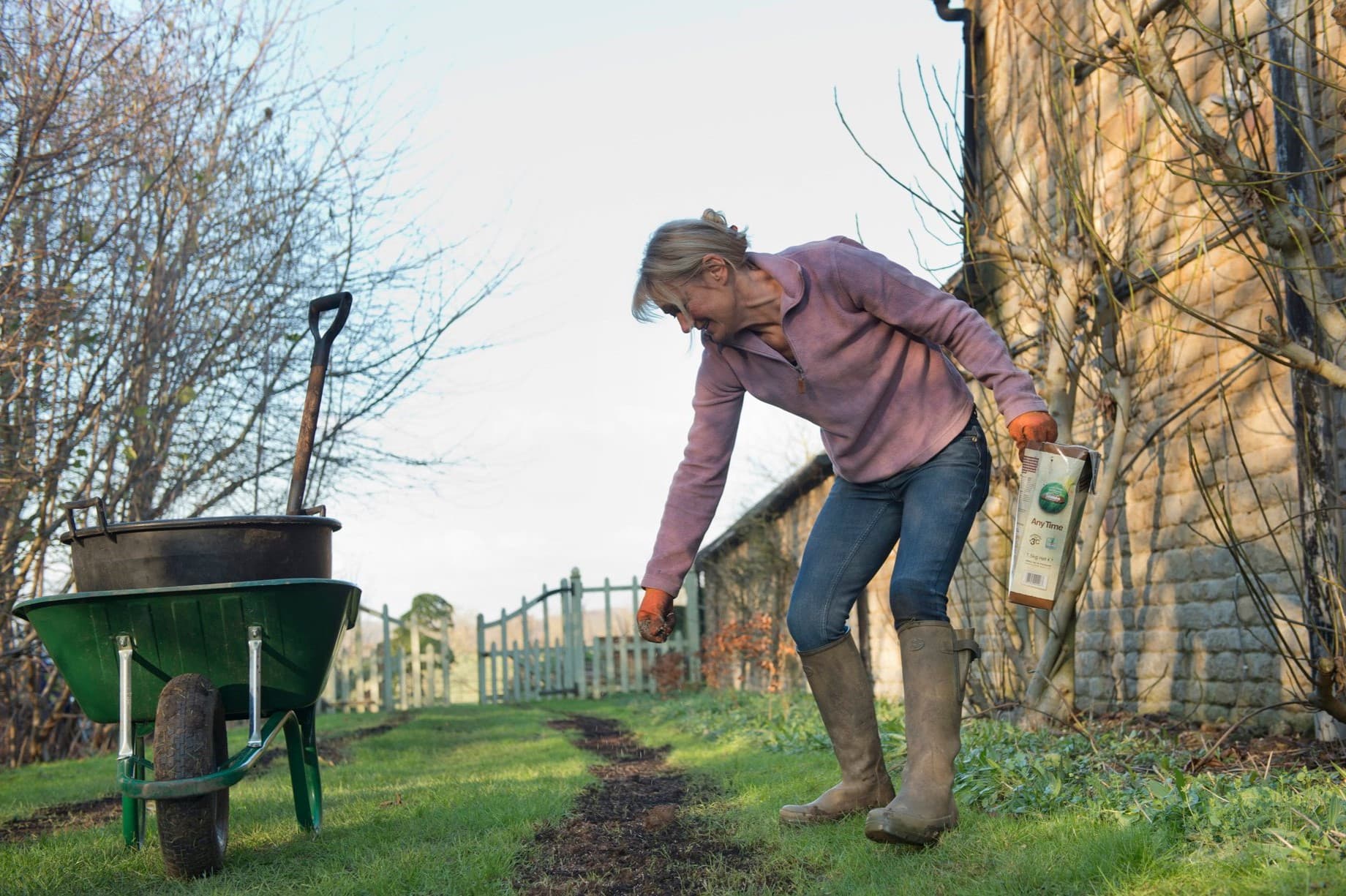


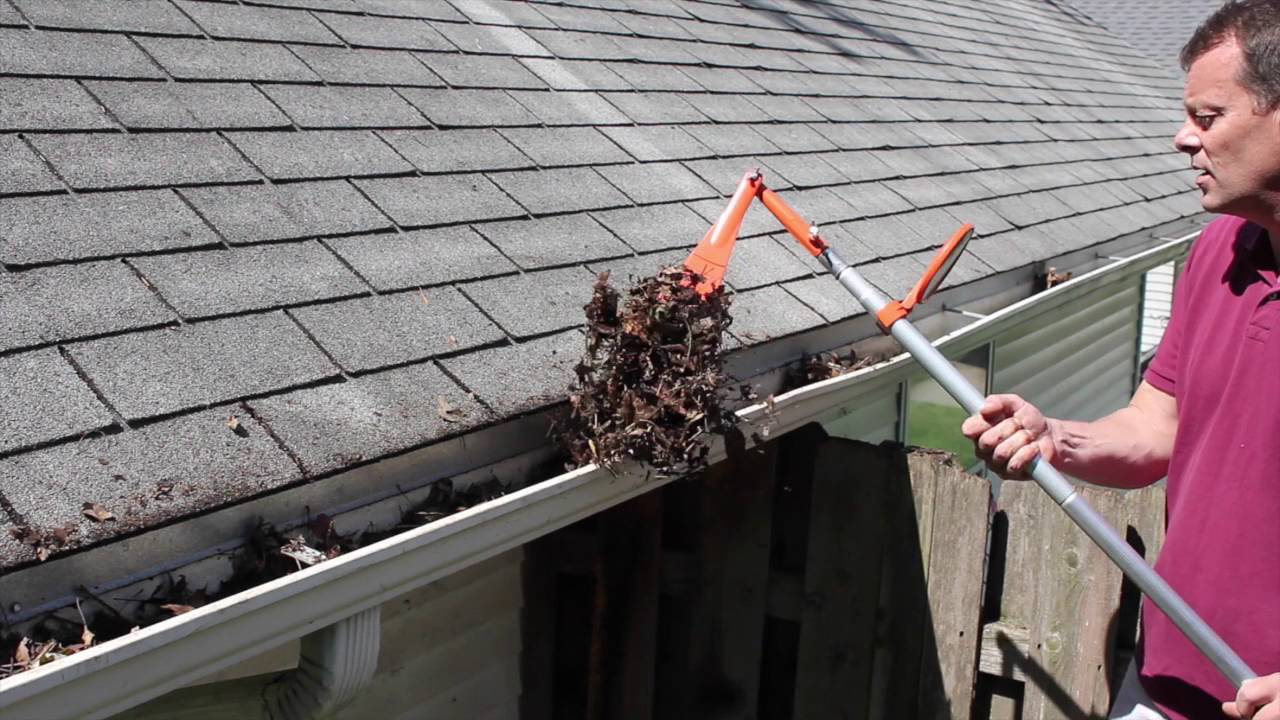



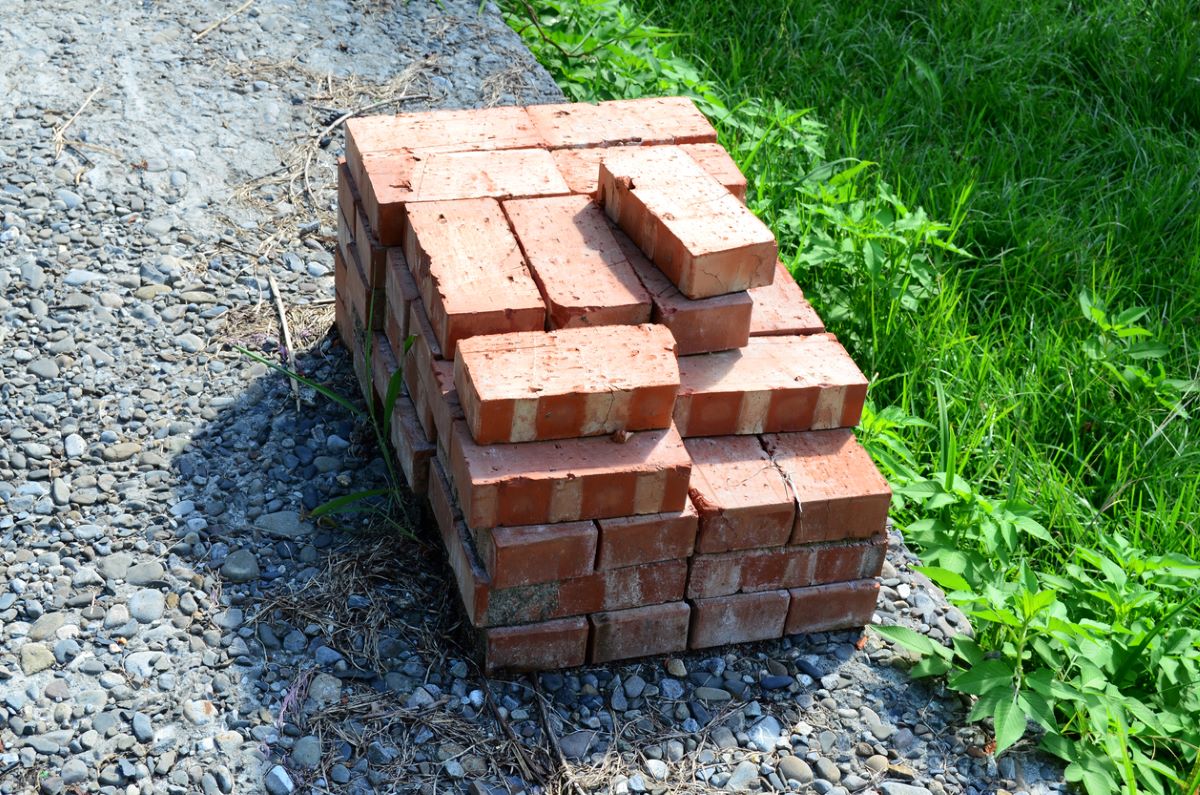

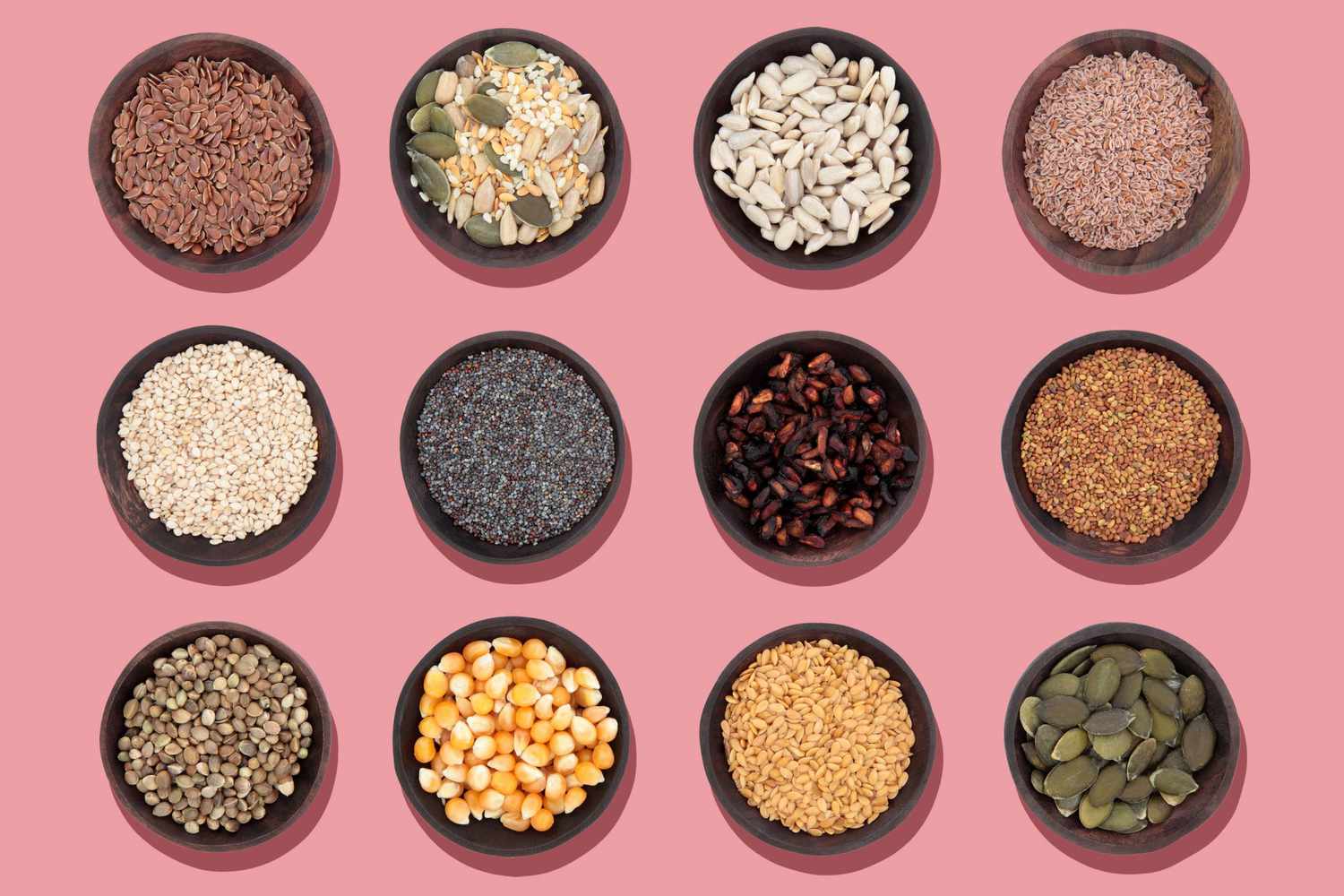




0 thoughts on “What Can You Grow In Gutters”